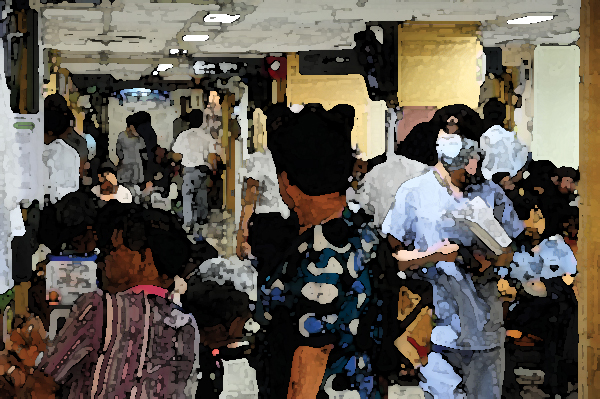Top 10 Medical News ⑤

The ceiling of 15,000 won for the flat rate system for senior outpatients will go up next year, for the first time in 16 years.
The flat rate system has been adopted to reduce medical cost burdens on the elderly aged at 65 or more. If the total medical care cost does not exceed 15,000 won, the patient can pay only 1,500 won. If it exceeds the threshold, the patient should pay 30 percent of the total medical cost.
In the past, senior patients often protested that they had to pay 4,500 won because the total medical cost exceeded 15,000 won. With a rise in reimbursements, the medical cost for senior patients’ first visits to clinics or hospitals will rise to 15,310 won next year, which makes the flat rate system for senior outpatients meaningless.
The Ministry of Health and Welfare held a committee to review health insurance policies in November and decided to divide the flat rates into multiple categories. From next year, if the outpatient medical cost is between 15,000 won and 20,000 won, the patient should pay 1,500-2,000 won, which is 10 percent of the total cost. If the cost is between 20,000 won and 25,000 won, the patient will pay 20 percent, or 4,000-5,000 won. If the cost exceeds 25,000 won, the patient should pay 30 percent, or more than 7,500 won. If the cost is less than 15,000 won, the patient can pay 1,500 won, just as now.
There have been some glitches in the revision of the system. The government’s first revision excluded Oriental medicine hospitals. However, due to the strong protest by the Association of the Korean Medicine, the final revision included them. At Oriental medicine hospitals, different rates apply to different categories, depending on the prescription of Oriental medicine. When the final revision of the flat rate system was announced, the Korean Medical Association expressed regret, criticizing Oriental medicine hospitals’ “free ride.”
The health-welfare ministry plans to scrap the flat rate system in the long term. Instead, the government plans to reduce the proportion of payment by outpatients with a chronic disease who need continued treatments at primary medical institutions, from 30 percent to 20 percent.

